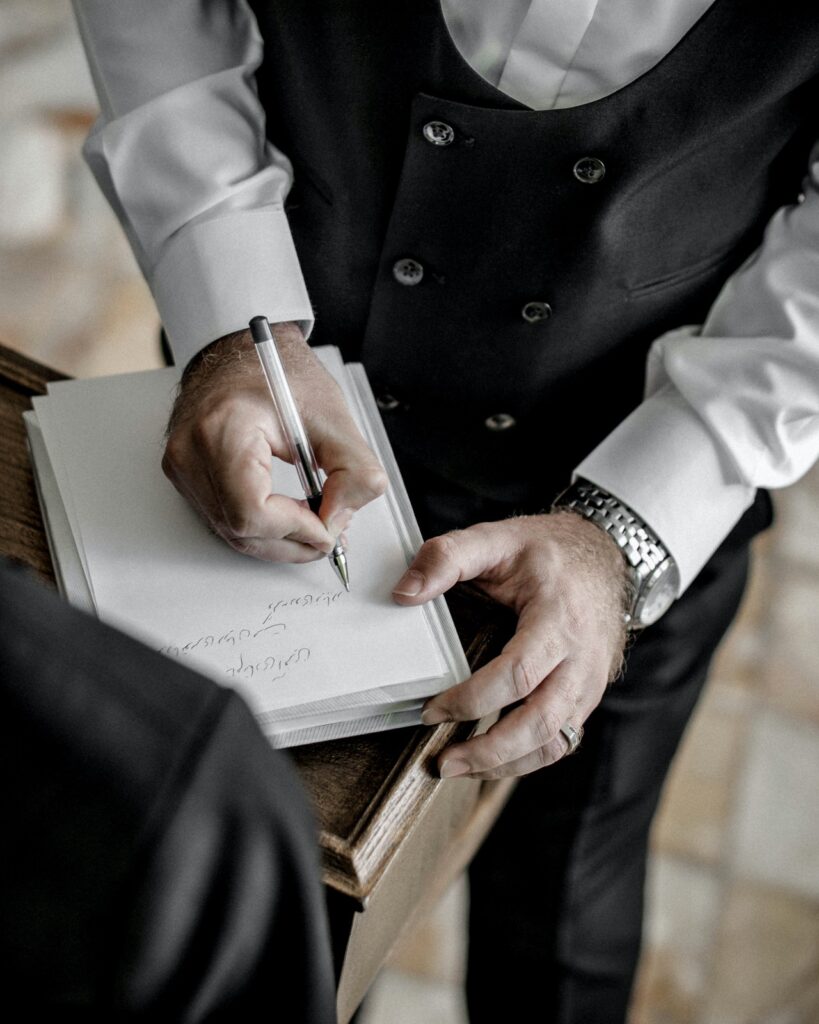One of the best things about having your own officiate at a wedding is that together, you can write a truly unique wedding ceremony and order of service totally personalized to you.
But, most weddings – even the most creative and out of the box – follow some kind of recognized wedding ceremony template. This makes the ceremony make sense to its audience, who will relate to traditional wedding elements. And once those are in place and the audience can feel involved and be able to follow the proceedings.
As an ordained minister, a large part of your role is to write and the wedding ceremony script – full of all the speech and actions – which you will later use to conduct the ceremony on the wedding day. So how do you go about writing that script? Having a basic template, using traditional – and is the perfect base on which to personalize and adapt the ceremony to the couple’s wants and needs for their specific wedding.
Here is what a basic wedding ceremony template looks like, and the parts of the wedding which are required…
The Procession
This is the opening to the ceremony – you’ll recognize it as the part where the wedding party enters down the aisle, to music. What music they choose is totally up to them – and a great chance to personalize the ceremony and show their personalities.
The Invocation
Once the wedding party are standing in front of their friends and families, this is where the officiant welcomes the guests and the couple – think of it as the spoken introduction to the ceremony. If the guests have stood for the bride’s entrance, this is also where the minister tells them to sit.
The Declaration of Intent
This is where the couple publicly says that they want to marry. In some US states, this is a formal requirement of the ceremony, in some it isn’t. Either way, it’s a good idea to include it in the script, as most guests will recognize and expect it.
The Vows Exchange
The exchanging of vows is not only one of the most well-known parts of the wedding ceremony, but it’s also where the couple can make it personal, emotional and be creative. This is where they usually explain what marriage, and their partner, means to them, but there are no strict rules on what the vows should specifically be.
The Rings Exchange
A physical token of their commitment to one another, the couple placing the ring on each other’s ring fingers is a key part of any wedding. Of course, this can also be personalized – if they want to personalize their declarations of commitment as they do it, or have their pet dog to deliver the rings to them, that’s all welcome!
The Pronouncement
This is where the officiant declares the couple man and wife, and the marriage official. Not only will guests expect this key moment, but it lets them know you are nearing the end of the ceremony.
The Recession
This is where everyone exits the wedding ceremony venue – and requires planning just as much as any other part of the ceremony, because it is also where the officiant is relied upon to let all the guests know what the plan of action is for directly after, and where they should go next.
Ready to officiate your own wedding ceremony? The AMM has all the resources you need.
